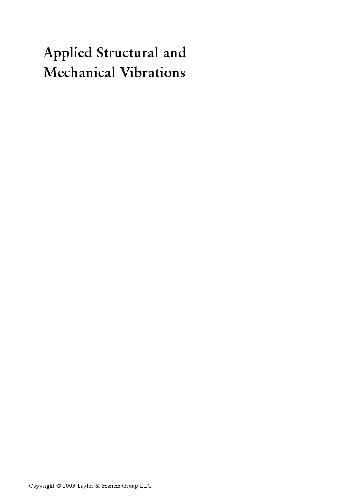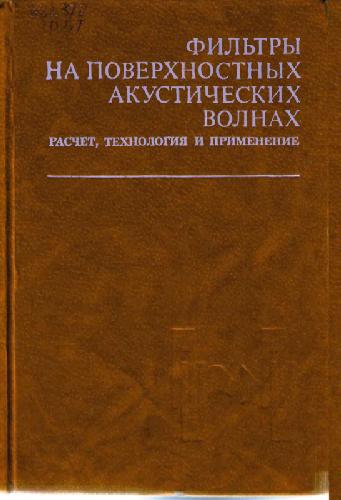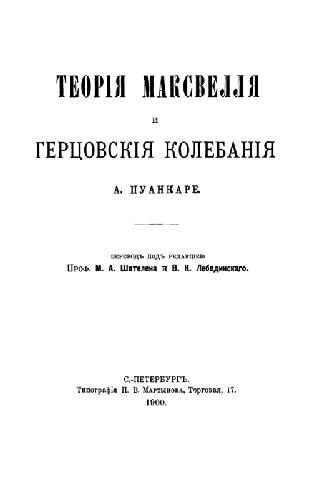Gatti P. L., Ferrari V.0-203-01455-3
Table of contents :
tf7105_fm……Page 1
Applied Structural and Mechanical Vibrations: Theory, Methods and Measuring Instrumentation……Page 2
Dedication……Page 4
Preface……Page 11
Acknowledgements……Page 13
Contents……Page 5
Part I Theory and methods……Page 14
Table of Contents……Page 0
1.1 Introduction……Page 15
1.2 The role of modelling (linear and nonlinear, discrete and continuous systems, deterministic and random data)……Page 16
1.3 Some definitions and methods……Page 17
1.3.1 The phenomenon of beats……Page 21
1.3.2 Displacement, velocity and acceleration……Page 23
1.3.3 Quantification of vibration level and the decibel scale……Page 24
1.4 Springs, dampers and masses……Page 29
1.5 Summary and comments……Page 34
2.2 Fourier series and Fourier transforms……Page 36
2.2.1 Periodic functions: Fourier series……Page 38
2.2.2 Nonperiodic functions: Fourier transforms……Page 43
2.2.3 The bandwidth theorem (uncertainty principle)……Page 49
2.3 Laplace transforms……Page 51
2.4 The Dirac delta function and related topics……Page 58
2.4.1 Brief introduction to the theory of distributions……Page 65
2.5 The notion of Hilbert space……Page 75
2.5.1 Sturm-Liouville problems……Page 81
2.5.2 A few additional remarks……Page 86
References……Page 88
3.1 Introduction……Page 89
3.2 Systems of material particles……Page 90
3.2.1 Constrained systems……Page 91
3.3 Generalized coordinates, virtual work and d’Alembert principles: Lagrange’s equations……Page 94
3.3.1 Conservative forces……Page 99
3.3.2 A few generalizations of Lagrange’s equations……Page 102
3.3.3 Kinetic energy and Rayleigh’s dissipation function in generalized coordinates. Energy conservation……Page 105
3.3.4 Hamilton’s equations……Page 108
3.4 Hamilton’s principle of least action……Page 109
3.5 The general problem of small oscillations……Page 114
3.5.1 A qualitative discussion of Lagrange’s method in smalloscillation problems……Page 121
3.6 Lagrangian formulation for continuous systems……Page 123
References……Page 128
4.1 Introduction……Page 129
4.2 The harmonic oscillator I: free vibrations……Page 130
4.2.1 Undamped free vibrations……Page 131
4.2.2 Damped free vibrations……Page 134
4.2.3 Logarithmic decrement……Page 139
4.3 The harmonic oscillator II: forced vibrations……Page 142
4.3.1 Forced vibrations……Page 144
4.3.2 Force transmissibility and harmonic motion of the support……Page 150
4.3.3 Resonant response of damped and undamped SDOF systems……Page 154
4.3.4 Energy considerations……Page 156
4.4 Damping in real systems, equivalent viscous damping……Page 158
4.4.1 Measurement of damping……Page 162
4.5 Summary and comments……Page 170
References……Page 171
5.1 Introduction……Page 172
5.2 Time domain—impulse response, step response and convolution integral……Page 173
5.2.1 Shock response……Page 187
5.3 Frequency and s-domains. Fourier and Laplace transforms……Page 193
5.3.1 Response to periodic excitation……Page 194
5.3.2 Transform methods I: preliminary remarks……Page 197
5.3.3 Transform methods [II]: applications……Page 199
5.4 Relationship between time-domain response and frequency-domain response……Page 203
5.5 Distributed parameters: generalized SDOF systems……Page 207
5.5.1 Rayleigh (energy) method and the improved Rayleigh method……Page 215
5.6 Summary and comments……Page 222
References……Page 224
6.1 Introduction……Page 225
6.2 A simple undamped 2-DOF system: free vibration……Page 226
6.3 Undamped n-DOF systems: free vibration……Page 231
6.3.1 Orthogonality relationships of eigenvectors and normalization……Page 234
6.3.2 General solution of the undamped free vibration problem, degeneracy and normal coordinates……Page 238
6.4 Eigenvalues and eigenvectors: sensitivity analysis……Page 250
6.4.1 Light damping……Page 255
6.5 Structure and properties of matrices M, K and C: a few considerations……Page 258
6.5.1 Mass properties……Page 259
6.5.2 Elastic properties……Page 261
6.5.3 More othogonality conditions……Page 267
6.6 Unrestrained systems: rigid-body modes……Page 268
6.7.1 Proportional damping……Page 274
6.7.2 Nonproportional damping……Page 278
6.8.1 Undamped systems……Page 281
6.8.2 Viscously damped systems……Page 285
6.9 Summary and comments……Page 288
References……Page 291
7.1 Introduction……Page 292
7.2 Mode superposition……Page 293
7.2.1 Mode displacement and mode acceleration methods……Page 298
7.3 Harmonic excitation: proportional viscous damping……Page 301
7.4 Time-domain and frequency-domain response……Page 304
7.4.1 A few comments on FRFs……Page 306
7.5 Systems with rigid-body modes……Page 310
7.6 The case of nonproportional viscous damping……Page 312
7.6.1 Harmonic excitation and receptance FRF matrix……Page 315
7.7 MDOF systems with hysteretic damping……Page 319
7.8.1 Laplace transform method……Page 322
7.8.2 Direct integration methods……Page 324
7.9 Frequency response functions of a 2-DOF system……Page 328
7.10 Summary and comments……Page 338
References……Page 340
8.1 Introduction……Page 341
8.2 The flexible string in transverse motion……Page 343
8.2.1 The initial value problem……Page 345
8.2.2 Sinusoidal waves, energy considerations and the presence of boundaries……Page 347
8.3 Free vibrations of a finite string: standing waves and normal modes……Page 353
8.4 Axial and torsional vibrations of rods……Page 359
8.5 Flexural (bending) vibrations of beams……Page 363
8.5.1 Axial force effects on bending vibrations……Page 370
8.5.2 The effects of shear deformation and rotatory inertia (Timoshenko beam)……Page 373
8.6 A two-dimensional continuous system: the flexible membrane……Page 379
8.7 The differential eigenvalue problem……Page 386
8.7.1 The differential eigenvalue problem: some mathematical concepts……Page 389
8.7.2 The differential eigenvalue problem: some examples and further considerations……Page 392
8.8 Bending vibrations of thin plates……Page 397
8.8.1 Circular plates……Page 400
8.8.2 Rectangular plates……Page 402
8.9 Forced vibrations and response analysis: the modal approach……Page 408
8.9.1 Forced response of continuous systems: some examples……Page 414
8.10 Final remarks: alternative forms of FRFs and the introduction of damping……Page 423
8.11 Summary and comments……Page 427
References……Page 429
9.1 Introduction……Page 431
9.2 The Rayleigh quotient……Page 432
9.2.1 Courant-Fisher minimax characterization of eigenvalues and the eigenvalue separation property……Page 435
9.2.2 Systems with lumped masses—Dunkerley’s formula……Page 439
9.3 The Rayleigh-Ritz method and the assumed modes method……Page 440
9.3.1 Continuous systems—a few comments on admissible and comparison functions……Page 447
9.4 Summary and comments……Page 453
References……Page 455
10.1 Introduction……Page 456
10.2 Experimental modal analysis—overview of the fundamentals……Page 457
10.2.1 FRFs of SDOF systems……Page 459
10.2.2 FRFs of MDOF systems……Page 473
10.3 Modal testing procedures……Page 483
10.3.1 Supporting the structure……Page 485
10.3.2 Excitation systems……Page 487
10.3.3 Measurement of response……Page 490
10.3.4 Excitation functions……Page 491
10.4.1 Characteristic phase-lag theory and Asher’s method……Page 495
10.4.2 Single-input single-output test configuration: FRF measurement……Page 498
10.4.3 Identification of modal parameters—curve fitting……Page 506
10.5 Summary and comments……Page 515
References……Page 516
11.2 The concept of probability……Page 518
11.2.1 Probability—axiomatic formulation and some fundamental results……Page 522
11.3 Random variables, probability distribution functions and probability density functions……Page 526
11.4 Descriptors of random variable behaviour……Page 532
11.4.1 Characteristic function of a random variable……Page 536
11.5 More than one random variable……Page 538
11.6 Some useful results: Chebyshev’s inequality and the central limit theorem……Page 543
11.7 A few final remarks……Page 550
References……Page 551
12.1 Introduction……Page 552
12.2 The concept of stochastic process……Page 553
12.2.1 Stationary and ergodic processes……Page 557
12.3 Spectral representation of random processes……Page 562
12.3.1 Spectral densities: some useful results……Page 565
12.4 Random excitation and response of linear systems……Page 572
12.4.1 One output and more than one random input……Page 580
12.5 MDOF and continuous systems: response to random excitation……Page 585
12.6.1 Stationary narrow-band processes: threshold crossing rates……Page 591
12.6.2 Stationary narrow-band processes: peak distributions……Page 593
12.6.3 Notes on fatigue damage due to random excitation……Page 597
12.7 Summary and comments……Page 602
References……Page 603
Further reading to Part I……Page 605
Part II Measuring instrumentation Vittorio Ferrari……Page 607
13.2 The measurement process and the measuring instrument……Page 608
13.3 Measurement errors and uncertainty……Page 610
13.4 Measuring instrument functional model……Page 612
13.5 Static behaviour of measuring instruments……Page 615
13.6 Dynamic behaviour of measuring instruments……Page 618
13.7.1 General considerations……Page 626
13.7.2 The two-port representation……Page 627
13.7.3 The electromechanical analogy……Page 633
13.7.4 Examples……Page 635
13.8 Performance specifications of measuring instruments……Page 641
13.9 Summary……Page 645
References……Page 646
14.2 Relative- and absolute-motion measurement……Page 648
14.3 Contact and noncontact transducers……Page 649
14.4.1 Resistive potentiometers……Page 650
14.4.2 Resistance strain gauges……Page 651
14.4.3 Linear variable differential transformers……Page 654
14.4.4 Inductive transducers……Page 655
14.4.5 Eddy-current transducers……Page 656
14.4.6 Capacitive transducers……Page 658
14.4.7 Optical transducers……Page 660
14.5.2 Electrodynamic transducers……Page 662
14.7.1 The seismic instrument……Page 664
14.7.2 Seismic displacement transducers……Page 666
14.7.3 Seismic velocimeters……Page 668
14.7.4 Seismic accelerometers……Page 670
14.8.1 Piezoelectric……Page 672
14.8.2 Combined linear-angular……Page 677
14.8.3 Piezoresistive……Page 678
14.8.4 Capacitive……Page 680
14.8.6 Multiaxial accelerometers……Page 681
14.9.1 Choice……Page 682
14.9.2 Calibration……Page 685
14.9.3 Mounting……Page 688
14.10 General considerations about motion measurements……Page 689
14.11.1 Functioning principle……Page 690
14.11.2 Piezoelectric force transducers……Page 692
14.12 Summary……Page 695
References……Page 698
15.1 Introduction……Page 699
15.2 Signals and noise……Page 700
15.3.1 The Wheatstone bridge……Page 702
15.3.2 AC bridges and carrier modulation……Page 705
15.4.1 Voltage amplifiers……Page 709
15.4.2 Charge amplifiers……Page 712
15.4.3 Built-in amplifiers……Page 716
15.4.4 Frequency response of amplified piezoelectric accelerometers……Page 720
15.4.5 Time response of amplified piezoelectric accelerometers……Page 722
15.4.6 Electronic integrating networks……Page 725
15.5.1 Ground noise and ground loops……Page 727
15.5.2 Inductive coupling……Page 730
15.5.3 Capacitive coupling……Page 731
15.5.4 Electrostatic shielding……Page 733
15.5.5 Single-ended and differential connection……Page 736
15.5.6 Optical, magnetic and capacitive isolation……Page 738
15.5.7 Current signal transmission……Page 740
15.5.8 Basics of low-noise amplification……Page 741
15.5.9 Filtering……Page 743
15.5.10 Averaging……Page 747
15.6 Analogue-to-digital conversion……Page 752
15.6.1 Quantization: resolution, number of bits, conversion time……Page 753
15.6.2 Sampling: sampling theorem, aliasing……Page 755
15.6.3 Main ADC types……Page 759
15.7.1 Vibration meters……Page 761
15.7.2 Tape recorders……Page 762
15.7.3 Computer-based data acquisition boards and systems……Page 764
15.7.4 Frequency and dynamic signal analysers……Page 769
15.8 Summary……Page 776
References……Page 778
Further reading to Part II……Page 779
Appendices……Page 781
A.1 The notion of finite-dimensional vector space……Page 782
A.2 Matrices……Page 788
A.2.1 Trace, determinant, inverse and rank of a matrix……Page 792
A.3 Eigenvalues and eigenvectors: the standard eigenvalue problem……Page 794
A.3.1 Hermitian and symmetrical matrices……Page 799
A.4 Matrices and linear operators……Page 803
Further reading……Page 809
B.2 Definitions……Page 810
B.2.1 Effects of vibrations on buildings……Page 812
B.2.2 Effects of vibrations on humans……Page 813
Further reading……Page 815







Reviews
There are no reviews yet.